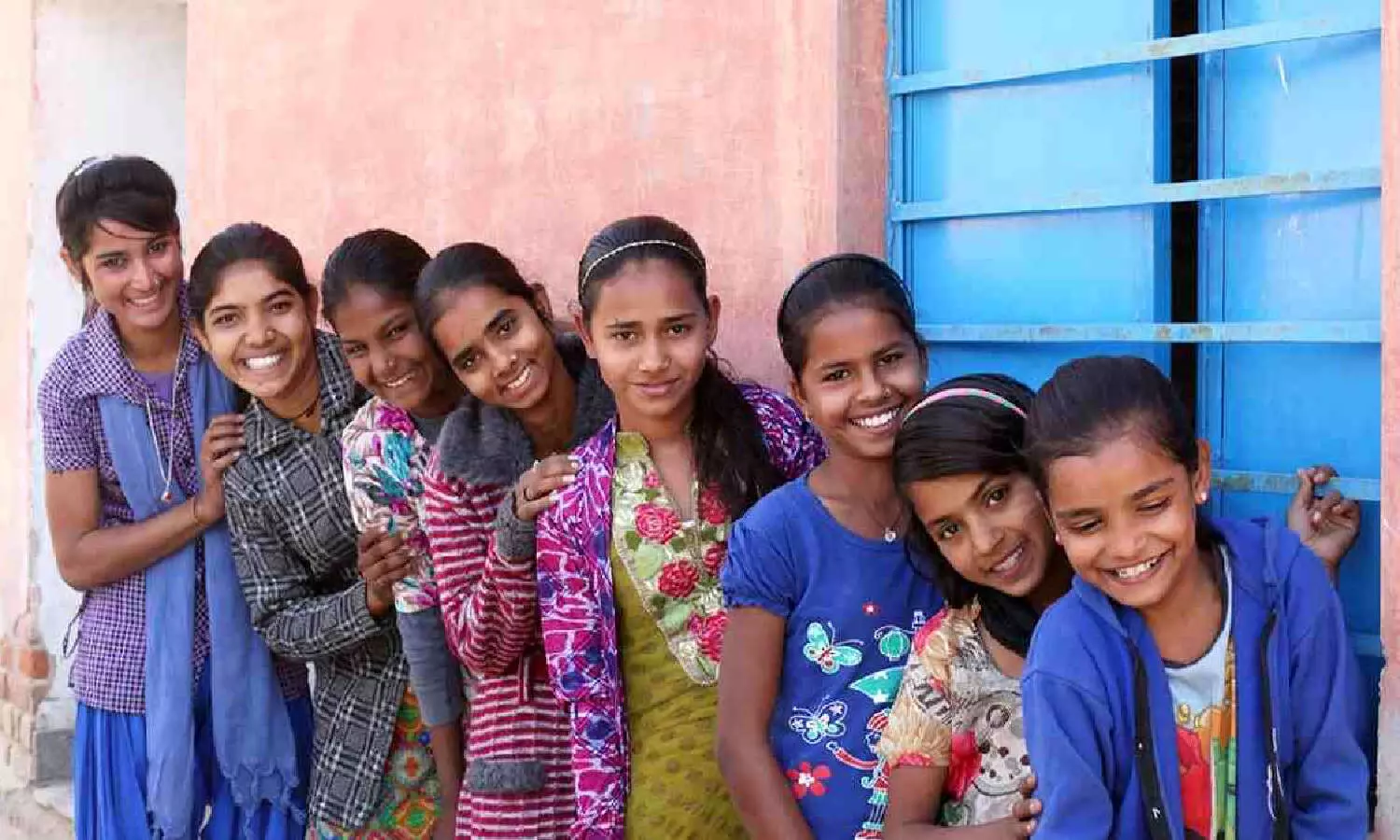International Day of the Girl Child: How comparison culture, social media are fueling depression among adolescents
For many Indian girls today, pressure doesn’t come only from exams or family expectations. It arrives quietly, as a notification, a scroll, a comment.
By - Newsmeter Network |
Hyderabad: In a world where a girl’s reflection is rarely just her own, adolescence has become a public performance. From filtered selfies to school rank lists, teenage girls are growing up in a climate of constant evaluation, where approval, beauty, and success seem measurable by metrics and algorithms.
On this International Day of the Girl Child, it’s worth asking: what does it cost to come of age in a culture that never stops comparing?
The new architecture of pressure
For many Indian girls today, pressure doesn’t come only from exams or family expectations. It arrives quietly, as a notification, a scroll, a comment. Social media has turned self-perception into a currency, where even moments of rest or failure are weighed against curated ideals of confidence and achievement.
“We’re seeing anxiety that doesn’t stem from one big event, but from a hundred small comparisons every day. Girls compare how they study, how they look, how they eat, and how happy they seem online. It’s mental fatigue disguised as normal life,” Clinical psychologist Dr. Meera Raghavan, who works with adolescents in Hyderabad, told NewsMeter.
According to her, the sense of “never being enough” now begins earlier than ever, around ages 11 to 13, when children start using smartphones unsupervised.
The sleep–self-worth spiral
One of the first casualties of this comparison culture is rest. Doctors and school counsellors report a steady rise in teenage insomnia, not caused by caffeine or late-night studying, but by scrolling.
Dr. Gaurav Taneja, a child psychiatrist at a government hospital, notes, “The human brain isn’t designed for constant visual input and social evaluation. When girls go to bed anxious about what others think of them, the body never truly switches off. Chronic sleep loss amplifies irritability and self-doubt, leading to what parents mistakenly see as ‘moodiness.’”
In a 2024 counselling study conducted across three Indian metros, 68% of adolescent girls reported disrupted sleep due to phone use at night. The same group also showed higher scores for anxiety and low mood.
When perfection becomes survival
The conversation about girls’ mental health often focuses on resilience, how they can “cope better.” But many psychologists argue that the system itself needs scrutiny. Schools that reward only measurable achievement and families that equate discipline with worth may be unintentionally fuelling distress.
Counsellor and educator Anita Shroff, who runs wellness programs in Telangana schools, says, “We teach girls to be outstanding, but not to be kind to themselves. The perfectionism that gets rewarded in school easily turns toxic in personal life. They’re told to be ‘all-rounders,’ but nobody tells them that being average at some things is completely fine.”
The language of “high potential” and “future leaders” may sound empowering, she adds, but for many girls it creates a chronic fear of falling short.
The gendered face of silence
While boys often express distress through anger or acting out, girls tend to internalise it. Many don’t tell anyone when they feel anxious; they overachieve instead. A quiet, polite student with excellent grades might, in fact, be masking panic or burnout.
A recent report by a Hyderabad-based mental health foundation found that among adolescent girls seeking therapy, 42% first approached a counsellor for “stress,” but were later diagnosed with generalised anxiety or depression. Most had never discussed emotional issues at home.
“Girls are socialised to be agreeable and self-reliant,” says Dr. Raghavan. “That makes them reluctant to admit emotional pain. They often apologise for feeling low, as if mental health is a burden to others.”
Why online validation feels essential
It’s easy to blame social media, but for many girls, it’s also their first experience of agency. They choose how they look, what they post, and whom they follow. The problem, experts say, is when external validation becomes the only mirror.
Social researcher Neha D’Souza, who studies youth behaviour, explains, “Validation isn’t inherently bad. The problem is scarcity. If a girl isn’t seen, valued, or listened to offline by teachers, family, or peers, she will seek that validation online. Platforms don’t create insecurity; they amplify what society already withholds.”
This dynamic, she adds, is particularly visible in Tier 2 and Tier 3 cities, where girls may have limited physical mobility but unlimited digital exposure.
What helps
Mental health experts suggest simple, evidence-backed interventions that can be implemented at home and in schools:
1. Device-free downtime:
Families can set one “digital sunset hour”, no screens after 9 p.m. A month of consistent digital rest improves sleep quality and stabilises mood.
2. Peer-support clubs in schools:
Several Telangana schools have started “listening circles,” small peer groups moderated by trained counsellors. They allow girls to share concerns without fear of judgment.
3. Emotional literacy training:
Introducing basic mental health vocabulary, “overwhelmed,” “burned out,” “numb”, helps girls articulate emotions before they escalate into crises.
4. Parent workshops:
Teaching parents to differentiate between discipline and dialogue can shift family culture. Many parents equate sadness with weakness; awareness can change that.
Redefining success and self-worth
The conversation around the girl child has long centred on education, safety, and empowerment. But in the digital era, empowerment also means mental safety, the right to rest, disconnect, and be imperfect.
“Every generation has its fight,” says Anita Shroff.
“For this one, the battle isn’t access, it’s peace of mind. We have taught girls to aim high; now we must teach them how to breathe when they get there.”
In the end, perhaps the most radical thing we can offer the girl child today is not another goal to chase, but a world where her worth isn’t something she has to prove, just something she can know.